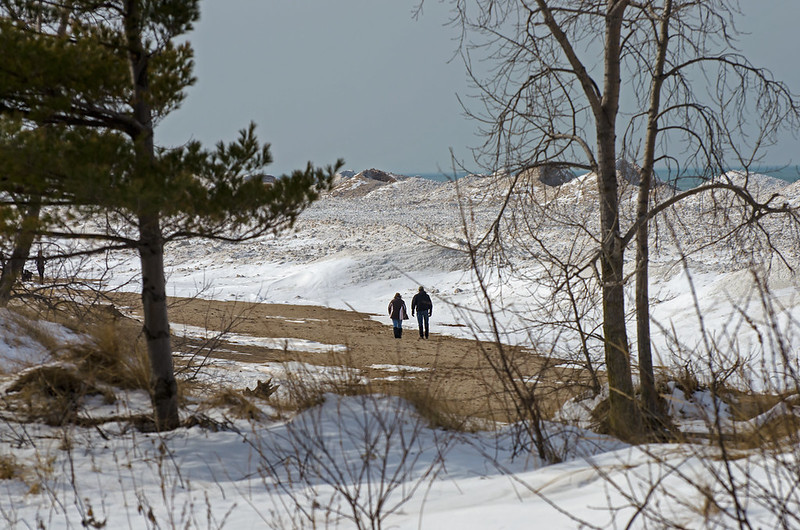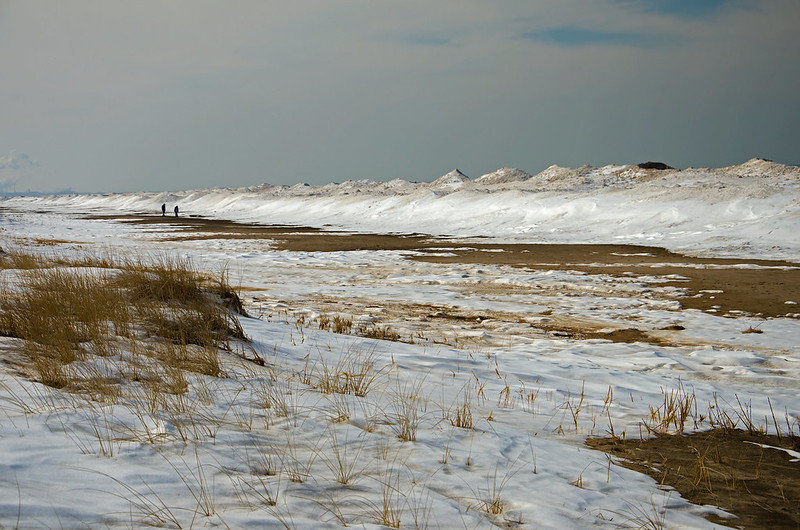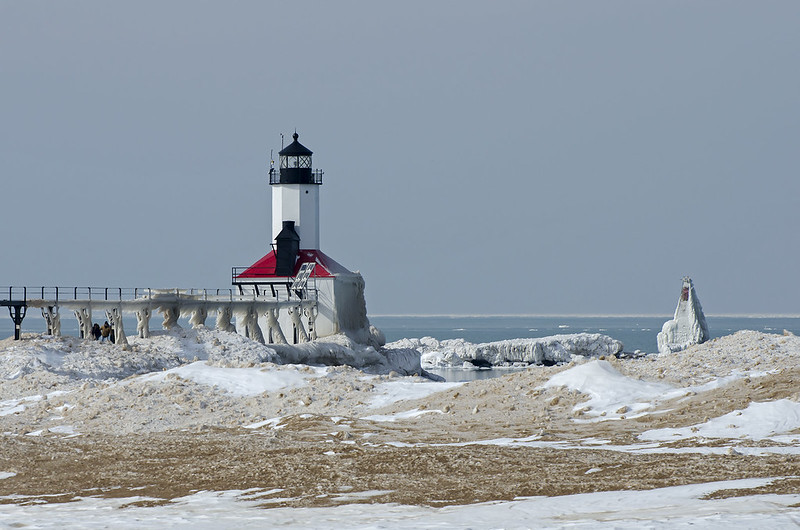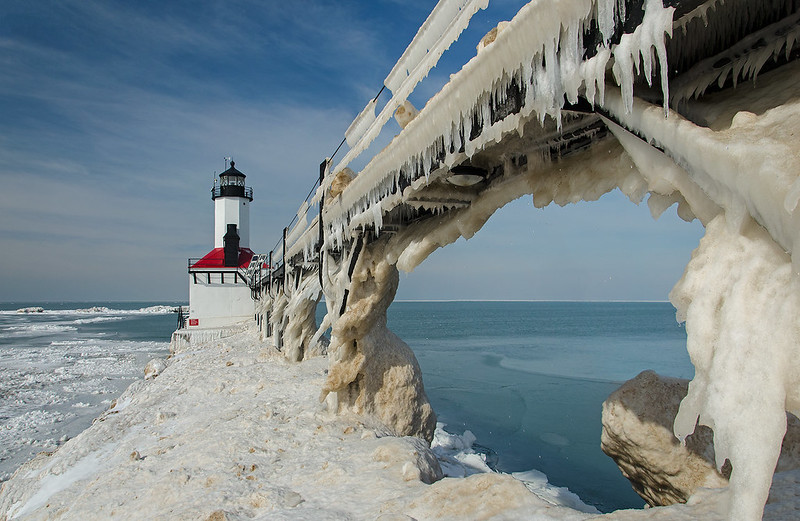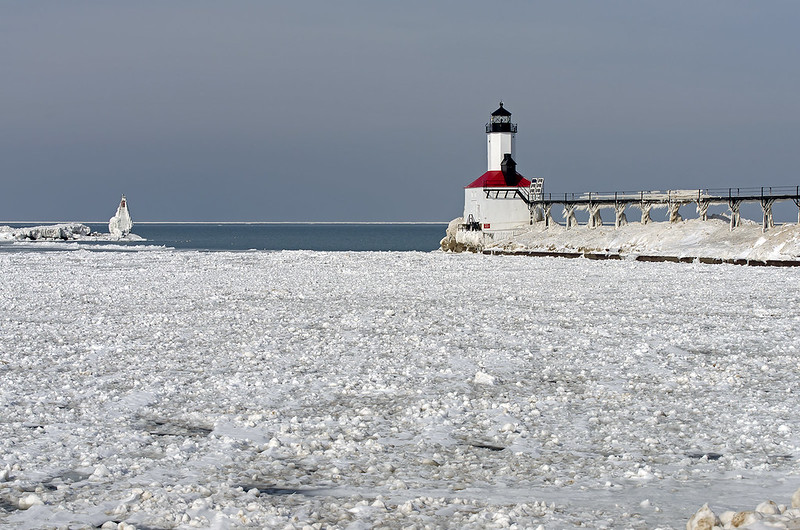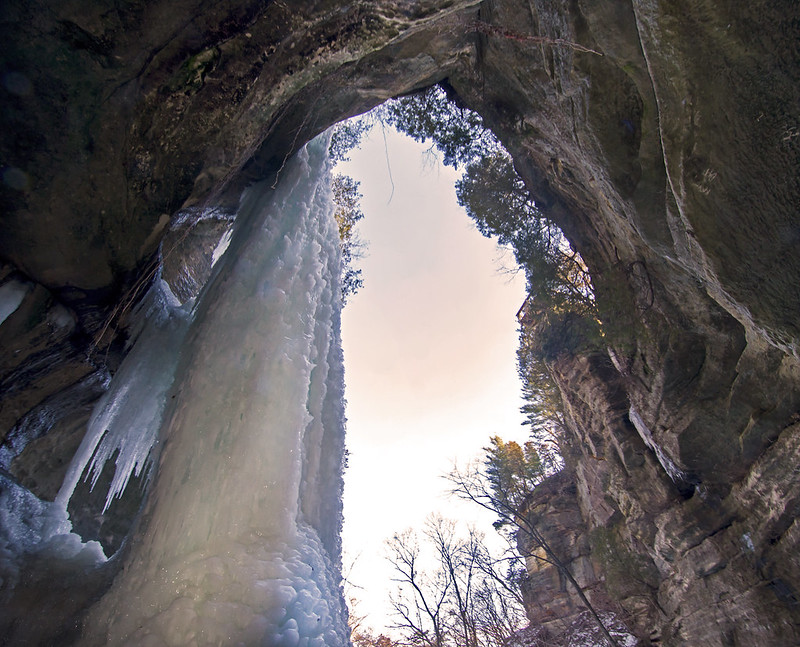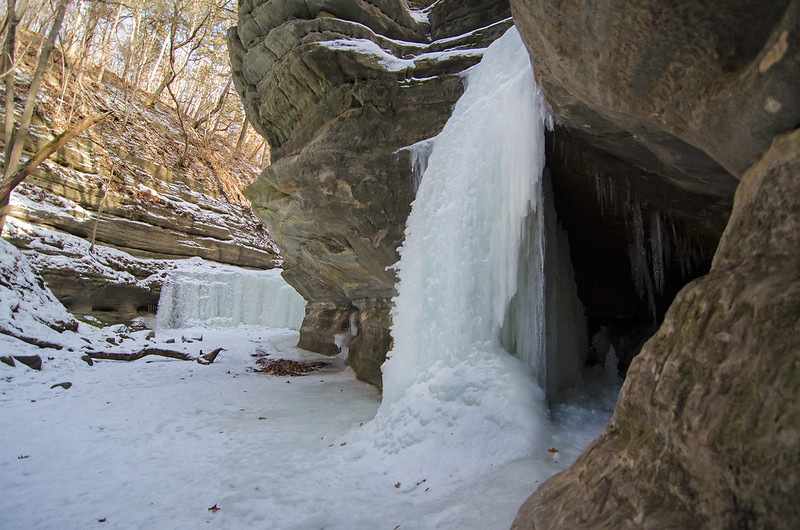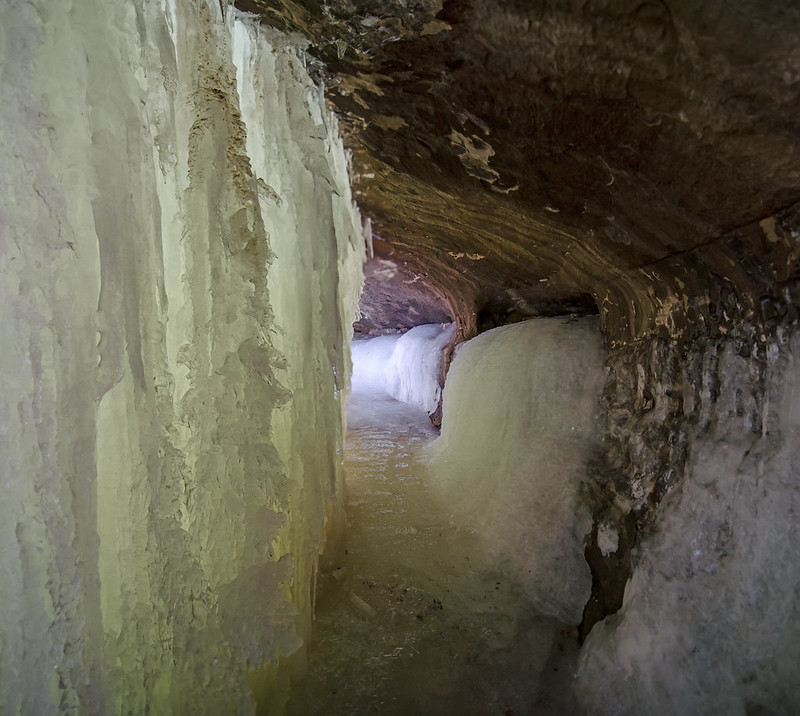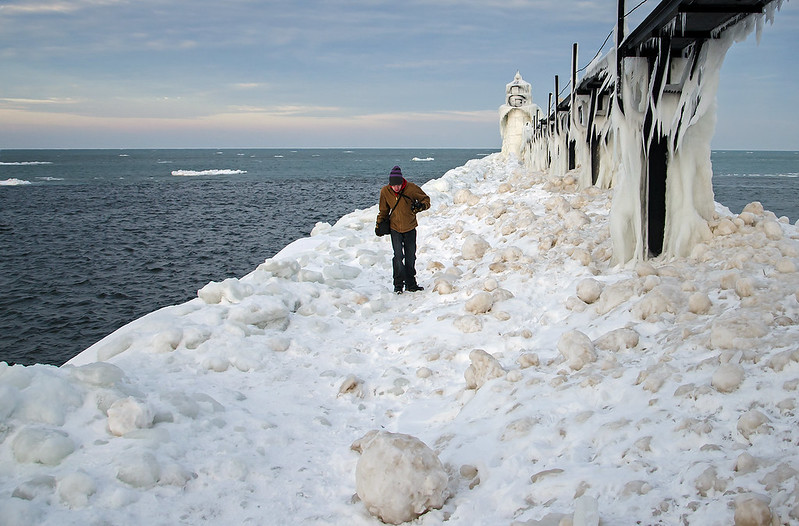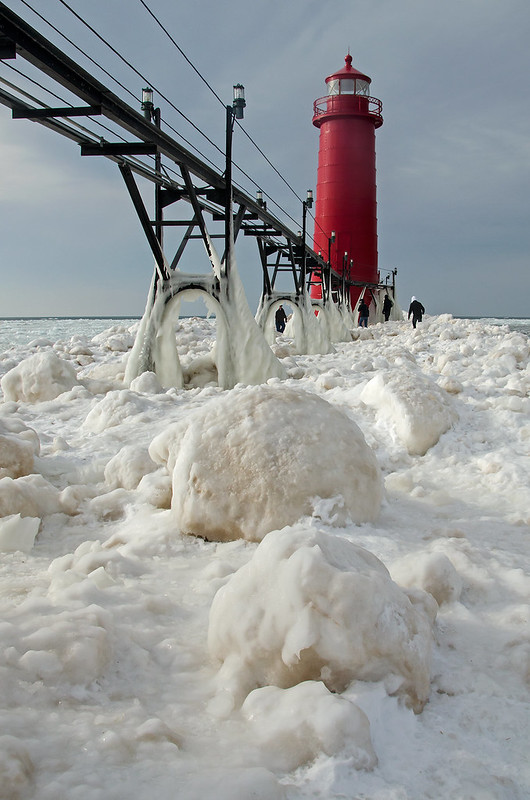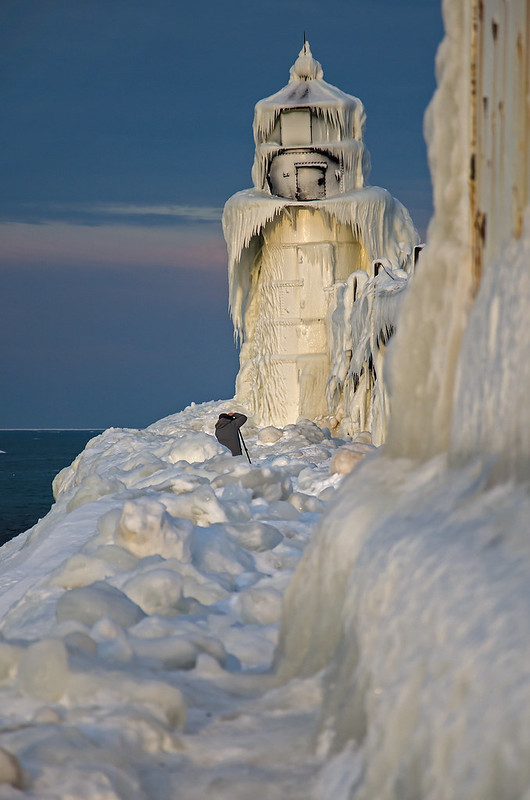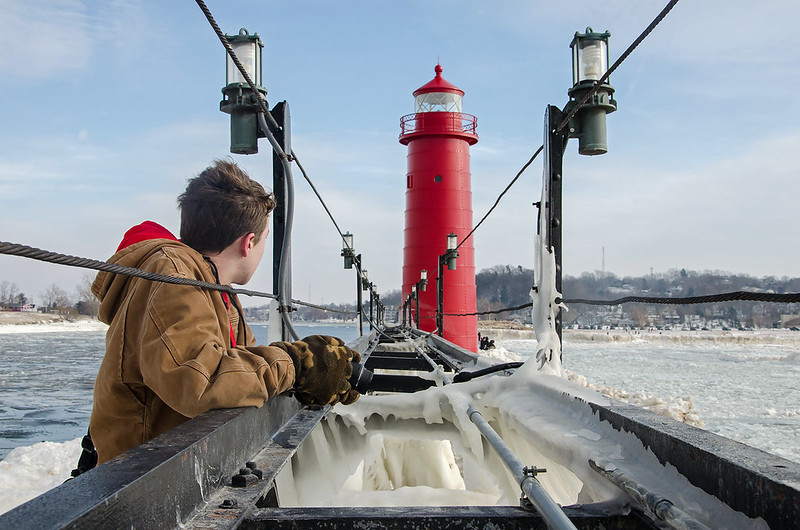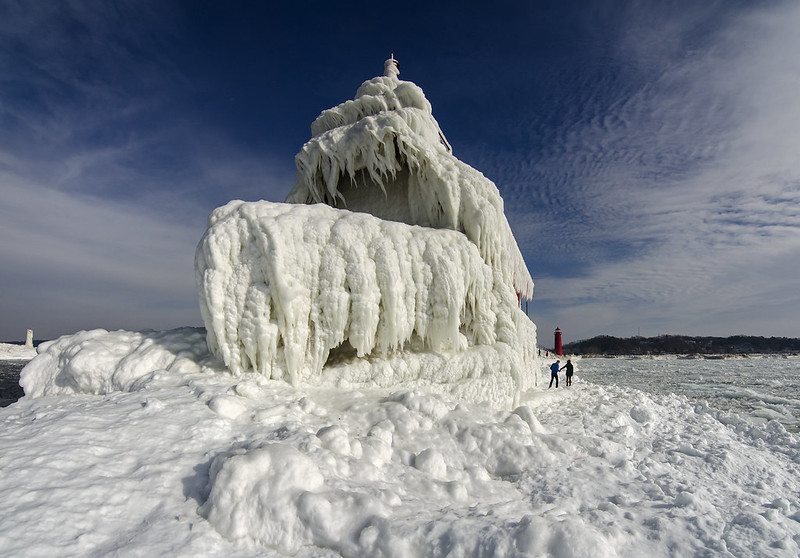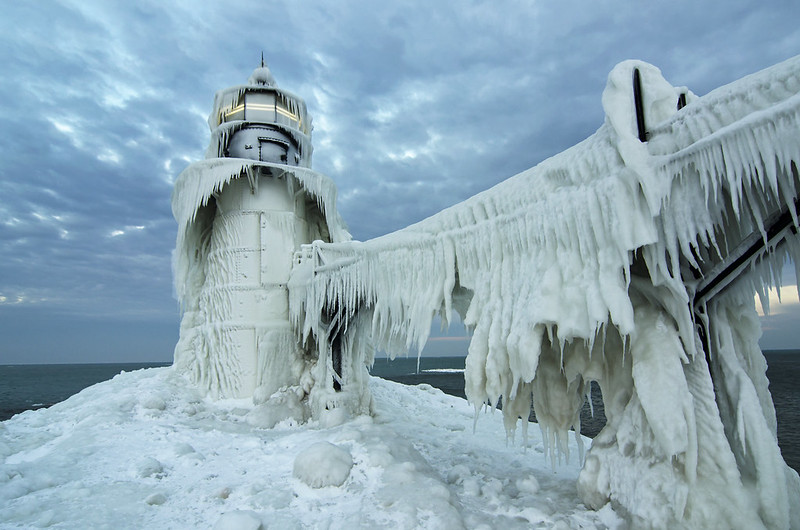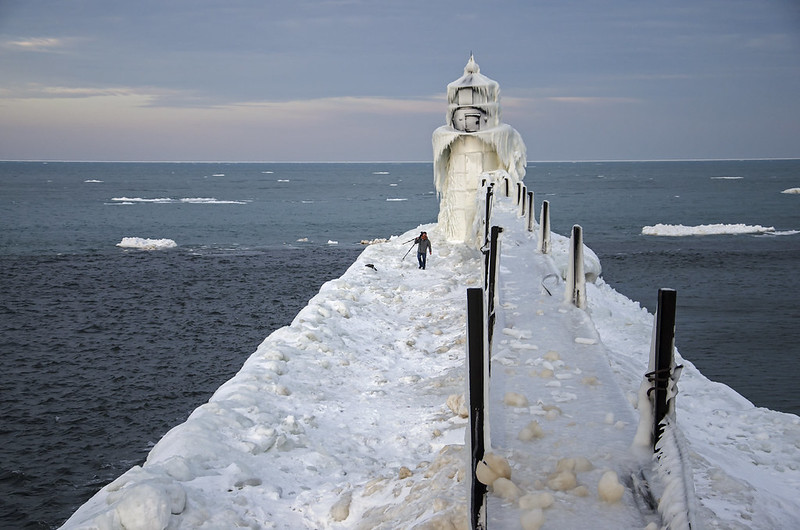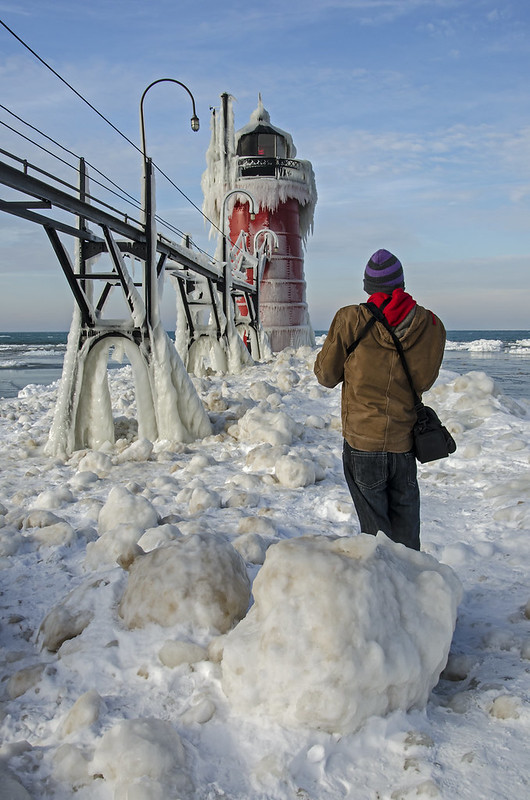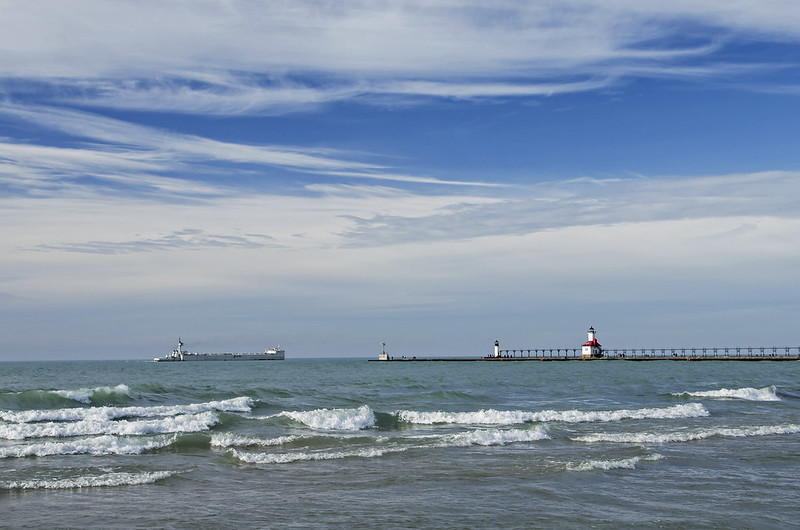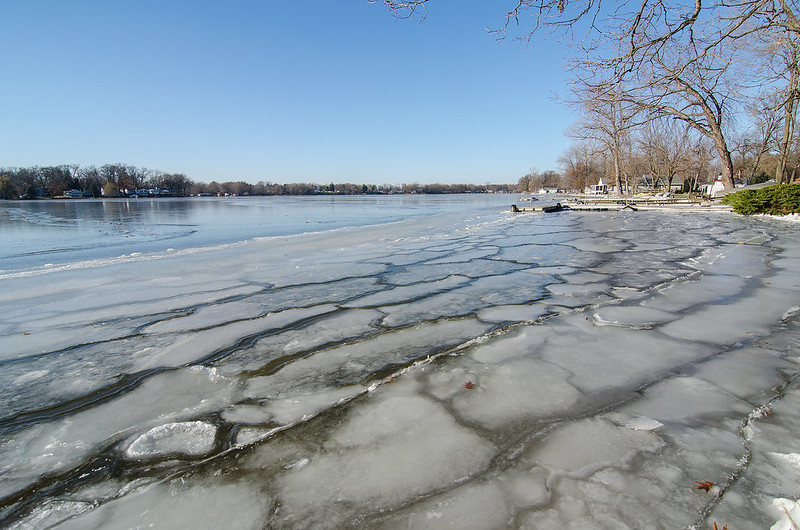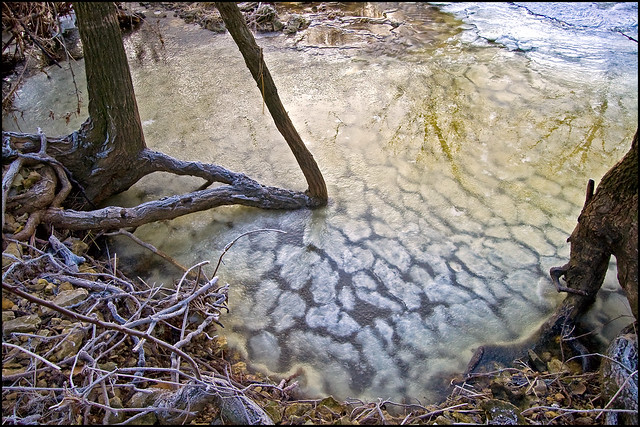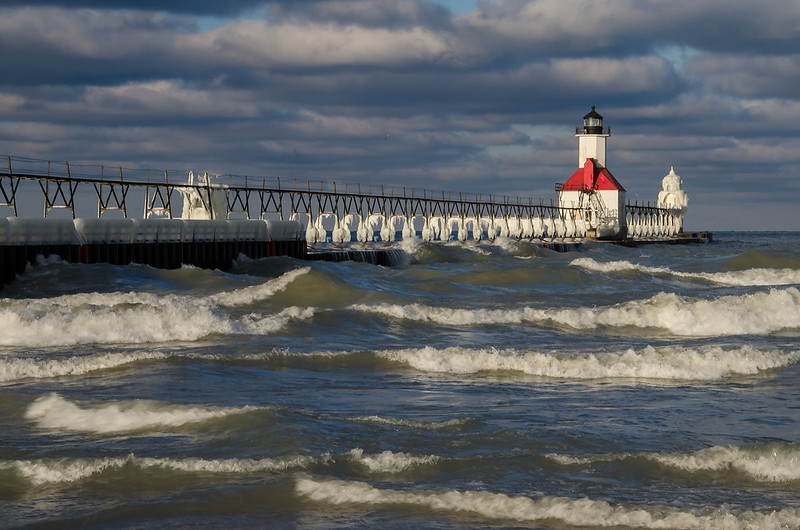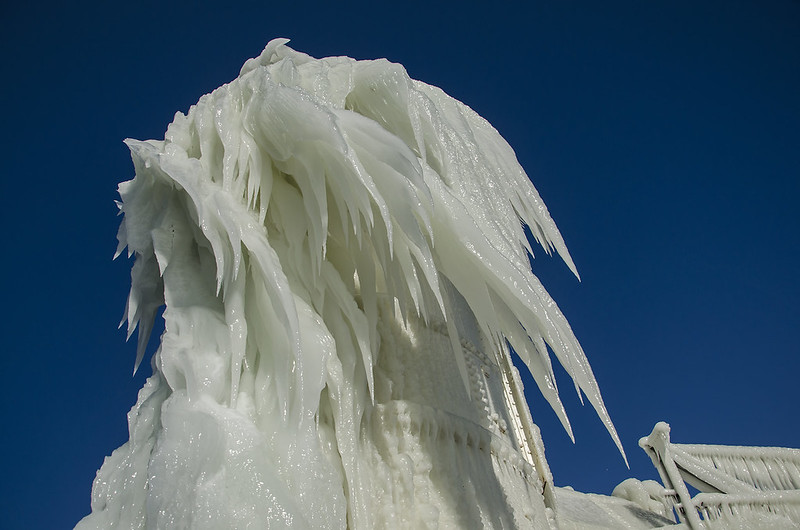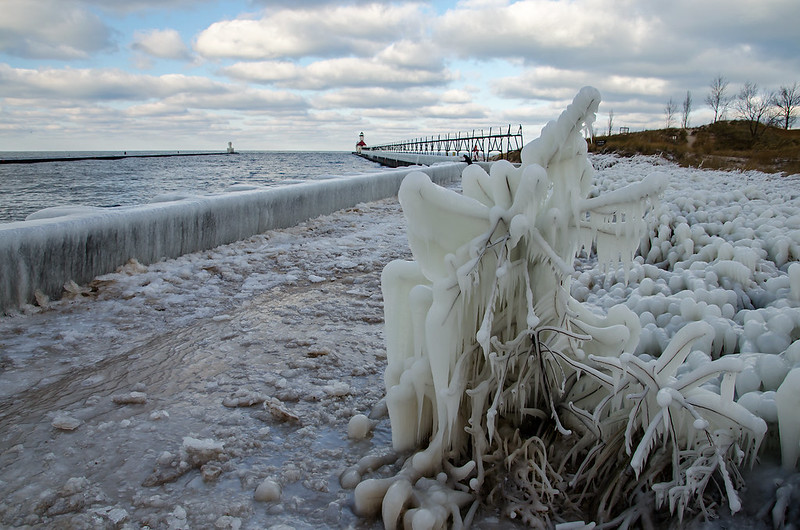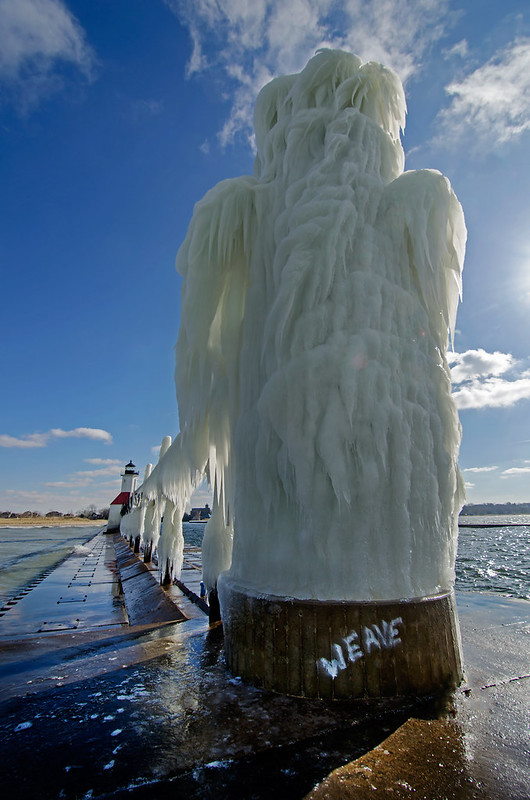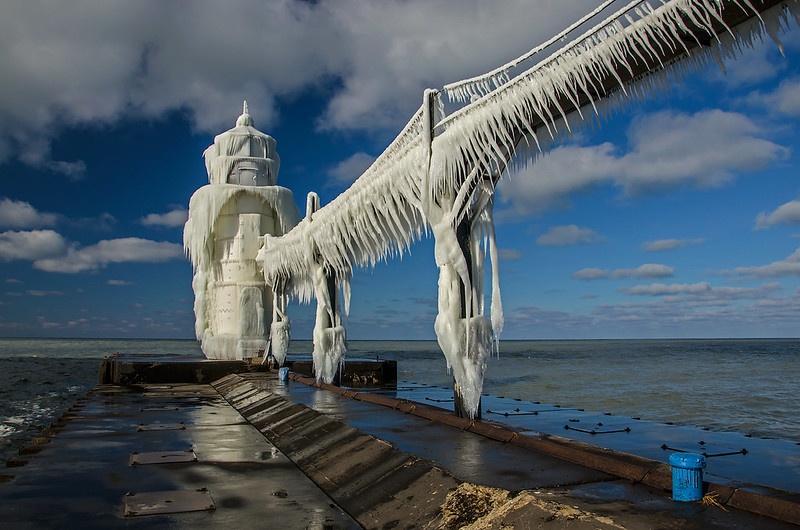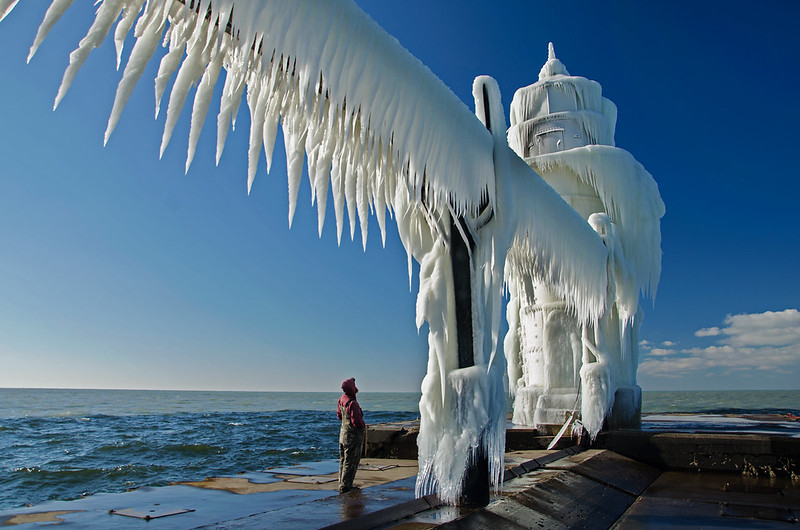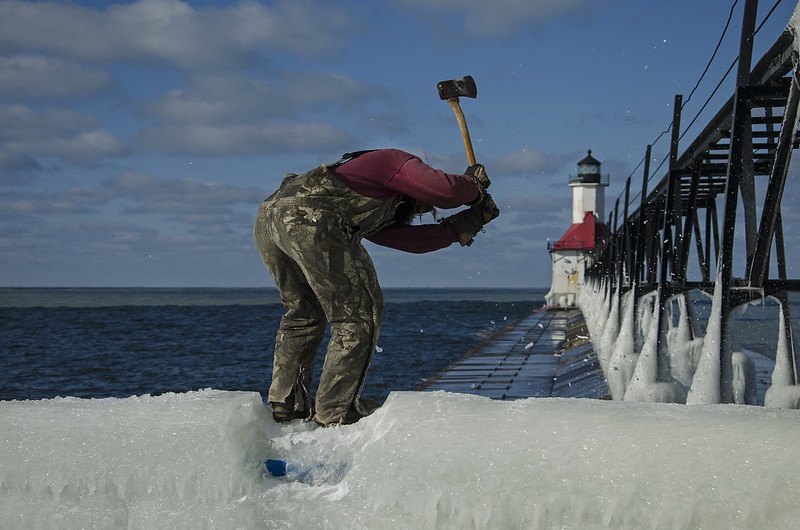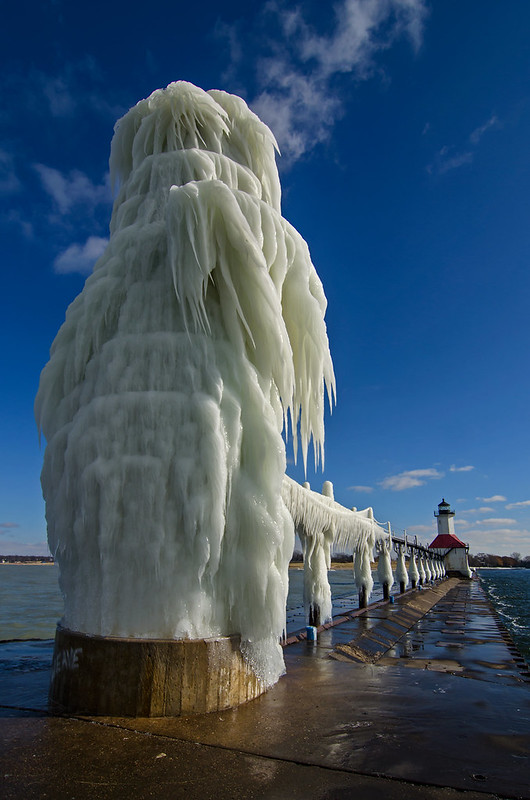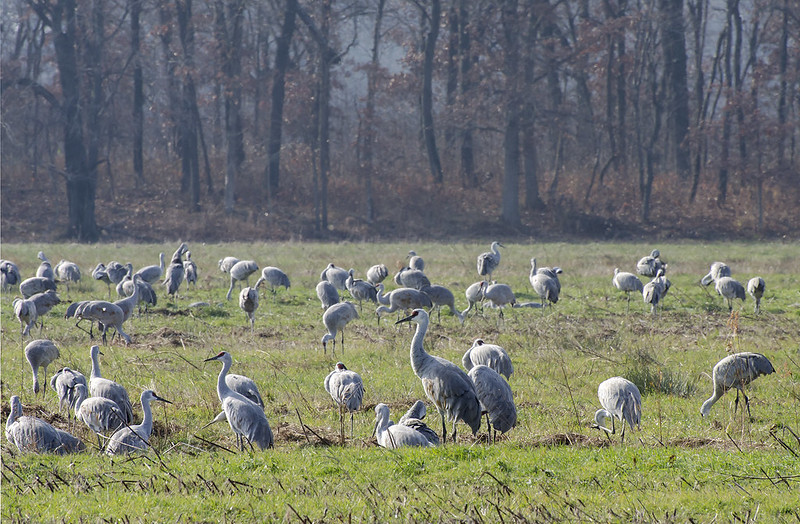
Each year, thousands of sandhill cranes migrate from the northern United States to their winter habitat in Florida. One stop along the way is in north central Indiana, at the Jasper-Pulaski Fish and Wildlife Area. At times, over 10,000 birds stop for a rest on their long migration. This week, officials estimated the number around 8,000.

The birds stand over three feet tall, with a wing span of seven feet, and are quite vocal as they "kite" down to the marsh to feed and mingle. They arrive around an hour before sunset, from late September through mid December, but peak numbers are usually in mid November. Just before sunset, groups of three to twenty fly in from every direction, in formation, one after another, until the marsh takes on the blue color of their feathers.

Keeping just far enough away from the human spectators, they congregate until morning - the second best time to see them, as they take off to find food in the nearby farm fields.
People from all around visit the Jasper-Pulaski Fish and Wildlife Area just to see the birds. There is a raised platform with spotting scopes available to visitors, as well as ample parking. This weekend, was cold, yet moderately crowded, as birdwatchers and photographers attempted to get their best look at the cranes. During the morning hours, just after sunrise, the few dozen remaining sandhill cranes were only a hundred feet away from the viewing stand, allowing photographers to snap away.
On our return that evening, we parked amid the cars and buses - yes, tour buses of people wishing to view the cranes. Unfortunately, this evening, the birds were far in the distance, and not easily seen. Even though they were too far away to photograph, it was still exciting to see thousands of birds landing in the distance, flying in from every direction, almost constantly. In the cold evening air, friendly park employees heated water on a propane stove, and offered hot chocolate and cookies to the visitors - an unexpected and welcome treat.
